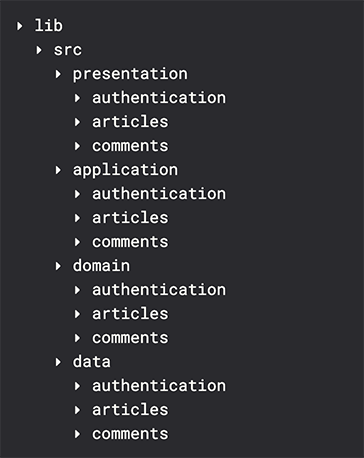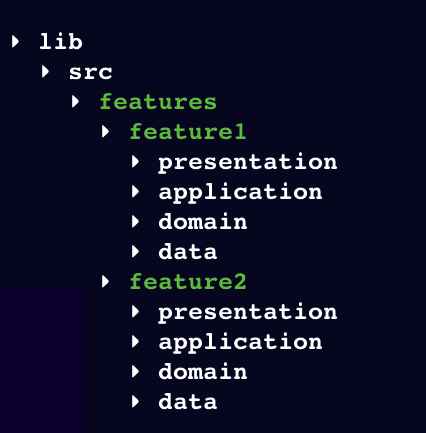In the realm of cross-platform app development, Flutter has emerged as a powerful and popular framework. One of the key factors contributing to Flutter’s success is its well-organized project structure, which helps us with the scalability and maintainability of the project. In this blog, we will understand best practices for fluter project structure: Feature-first or Layer-first?
Feature-first or Layer-first structuring helps us to follow a clear approach and add features in a consistent manner. We face numerous issues in the lack of structuring a flutter project such as:
- Higher cost to maintain the Flutter app.
- Adding new or deleting features becomes a nightmare for developers.
- Problematic for teamwork.
You can also read more about Flutter app development services from Mobikul.
First, let’s check out the Layer-first approach for structuring of folders in flutter projects.
App Architecture consists of four separate layers:
- Presentation: States, widgets, and controllers
- Application: Services
- Domain: Models
- Data: Data sources, Repositories
In this approach, the layer comes first and features inside the layers. So, it’s called the Layer-first approach. We do not put feature files directly in the layer folder, we create a feature folder inside Layer folder and add our feature files into it.
Suppose, we have multiple features and it will look like this inside layers and will contain dart files related to their feature.

Pros of Layer-First Approach:
- Consistency: The structure remains more consistent across features, making it easier for developers to switch between features.
- Centralized Logic: Shared business logic and utilities can be more easily managed and reused.
- Easier Navigation: Developers can quickly locate relevant files based on the layer they are working on.
- Dependency Management: Handling cross-feature dependencies might be simpler due to centralized layers.
Cons of Layer-First Approach:
- Less Isolation: Changes in one feature might inadvertently affect other features due to the more interconnected nature of the structure.
- Tighter Coupling: Layers might become tightly coupled if not managed carefully, leading to reduced modularity.
- Potential Overhead: More effort might be needed to extract and reuse features in other projects.
Now, let’s understand the Feature-first approach for Flutter project structure.
The feature-first approach demands that we create a new folder for every new feature that we add to our app. And inside that folder, we can add the layers themselves as sub-folders.
In the case of Feature-first (Layer inside feature), the project structure will look something like this:

Pros of Feature-First Approach:
- Modularity: Each feature is self-contained, making it easier to develop, test, and maintain.
- Parallel Development: Different team members can work on different features simultaneously without frequent conflicts.
- Code Reusability: Features can be easily reused or even extracted to other projects if needed.
- Clear Ownership: Each feature has a clear owner, making it easier to assign responsibilities and resolve issues.
- Focused Testing: Unit tests and UI tests can be more focused and specific to each feature.
Cons of Feature-First Approach:
- Cross-Feature Dependencies: As the application grows, managing dependencies between features can become challenging.
- Learning Curve: New developers might need to understand multiple feature-specific structures and conventions.
Conclusion:
In this article, I have explained different approaches for structuring of folders in flutter projects.
Thanks for reading this article ❤
If I got something wrong 🙈, let me know in the comments. I would love to improve.
Reference Link:
- https://codewithandrea.com/articles/flutter-project-structure/
- https://docs.flutter.dev/resources/architectural-overview
Check out these interesting flutter topics:

I would say that feature-first approach should never be used.
If app is too big for layer-first, than it should be split into packages.